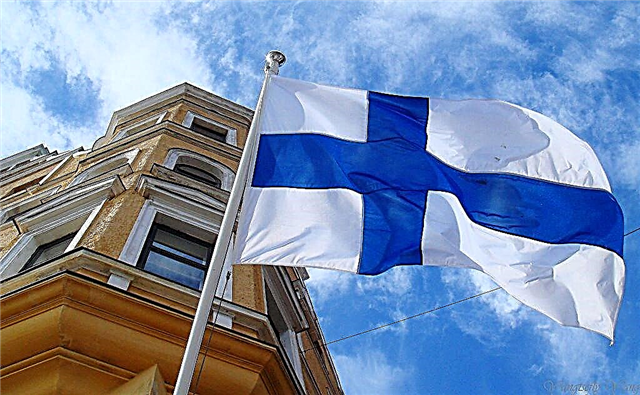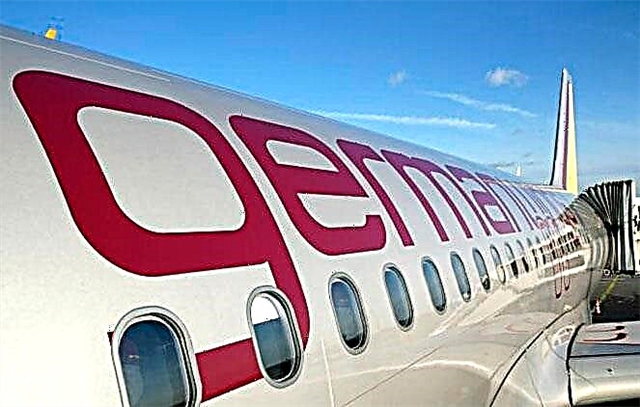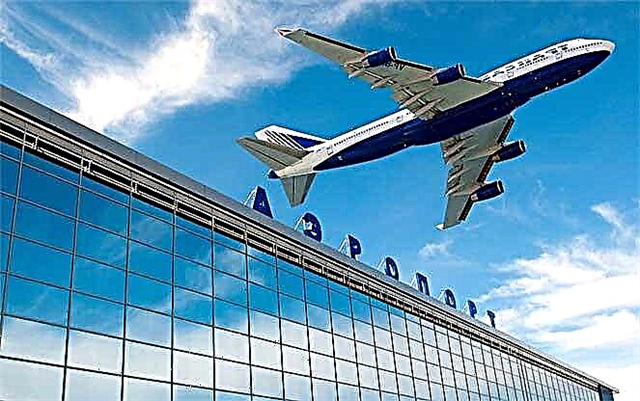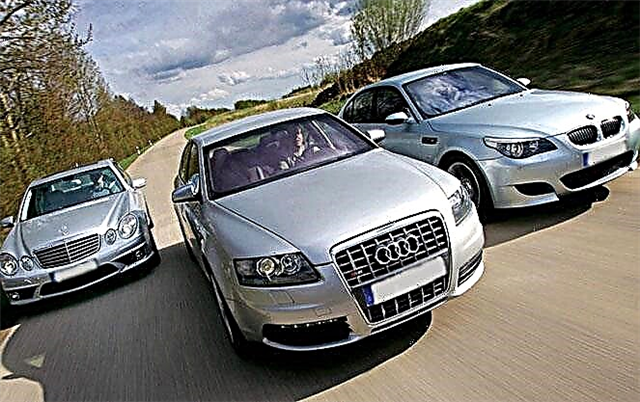There are cars that don't need advertising. As you know, it is not specialists who vote for the final product, but consumers - in rubles, dollars, euros or some other “tenge”. The German car industry is deservedly recognized as one of the best in the world. Machines and motors made in Germany are renowned for their quality and reliability, as evidenced by all sorts of ratings and sales figures. Car enthusiasts highly value "Germans", no matter what age or class they are, so the price for them falls less than for cars from other manufacturers. And if someone doubts, they can be convinced of this by visiting the nearest car market.

History of the German car industry
The automotive industry has traditionally been one of the leading sectors of the German economy. A car in Germany is not just expensive or prestigious, but necessarily a high-quality means of transportation. Despite the practicality inherent in the Germans, it is always something much more, because the country is considered the ancestral home of this vehicle.
It all started with the fact that in the mid-70s of the XIX century Karl Benz and at the same time Nicholas Otto were among the first in the world, and independently of each other, invented the internal combustion engine. The starting point was 1885, when Benz put the engine on a cart, which became the prototype of the car.
The prospect was clear, and by the beginning of the 20th century, Germany was producing about 900 cars annually. Basically, these were the models "Mercedes", "BMW" and "Opel". The process did not stop for a day, even during the Third Reich. It was during the period when military engineering was actively developing that the brands "Volkswagen" and "Porsche", which are well-known all over the world today, appeared.

After the war, Germany first set about restoring the auto industry. Moreover, in its eastern part, its own production was established, which existed until the beginning of the 90s. Relatively few cars were produced there - only about 260 thousand a year, but they were in demand in Eastern Europe.
By that time, the Federal Republic of Germany was producing about 4 million units per year. In different years, up to the fall of the Berlin Wall, the Germans occupied the second or third place in the world in car production.
Currently, about 6 million cars are produced in Germany annually, that is, more than a third of the total production of the European Union.
Leadership for cars with German origin was entrenched in Europe back in the 50s of the last century. Today, the automotive industry in Germany employs over 800 thousand people, and it itself ranks fourth in the world after the automotive industry in China, Japan and the United States.
The most famous brands of German cars

Today the German automotive market is dominated by six of the largest companies:
- Audi AG.
- Volkswagen AG.
- BMW AG.
- Daimler AG (this includes Mercedes-Benz).
- Opel.
- Ford Germany.
The latter company is an overseas brand, so even in Germany itself, its cars are not selling very well. Mercedes-Benz is part of another German automotive concern, so it shouldn't be surprising that it is not on the list.
Audi and Volkswagen are also part of the same concern, but their products, although largely unified, enjoy different authority. The second of them, by the way, is the largest manufacturer in Germany and ranks third in the world after Toyota and General Motors.
"Mercedes Benz"
The Mercedes-Benz trademark appeared in 1926 when Karl Benz and Gottlieb Daimler merged their companies under the common Daimler-Benz brand. The name, known all over the world, was formed as a result of the merger of the names of the most significant models of the companies - Benz Patent-Motorwagen of 1886 and Mercedes of 1901, which in turn was named after the daughter of Emil Jellinek, one of the Daimler co-owners at that time.
By the way, Wilhelm Maybach was another co-owner of the company, and Ferdinand Porsche was put in charge of the concern. Thus, in one firm all the future idols of the German car industry gathered, and its configurator was "Papa Benz", as Maybach called him.

Today the Mercedes manufacturer is based in Stuttgart (Baden-Württemberg) and is part of the Daimler AG concern.
The brand is currently valued at about $ 43 billion, second only to Toyota.
The most popular on the market are traditionally the models of the C, E, ML and Gelendvagen series. At the same time, the ratings show a rapidly growing demand for the CL (coupe), GL (crossover) and CLK (convertible) series.
Volkswagen
Volkswagen or, translated from German, "people's car" is one of the largest automotive companies in the world. The concern, headquartered in Wolfsburg, includes about 342 companies, including Skoda, Bugatti, Seat, Audi and Bentley. And the company was founded in 1934 by the same Ferdinand Porsche, who at the same time designed German tanks.

The company has 48 factories in 15 countries in Europe and six countries in America, Asia and Africa and annually supplies the market with over 6 million cars with the well-recognized emblems in the form of the German letter W in a circle. It is the undisputed leader, producing every fourth European car.
The most popular models today are the Golf, after which the entire class of compact front-wheel drive hatchbacks is named, the Jetta and Passat sedans, including the CC coupe, and the Tiguan and Touareg crossovers. We can safely say that the entire model range is in demand.
"Opel"
Adam Opel AG, headquartered in Rüsselsheim, started car manufacturing in 1899. As a result, the beginning of the global economic crisis of the 30s of the last century was met by the company as the leader of the German automobile industry. However, in 1929, 80% of its shares were sold to the American company GM, and since last year the company went to the French concern PSA.

Today, Opel has 11 assembly plants, but in terms of the number of employees and cars produced, it is ten times inferior to Volkswagen - the manufacturer's official website reports only 36 thousand employees.
Small Opel models are the most popular in Europe. First of all, these are Corsa and Astra of various modifications. In Russia, Insignia is more appreciated, as well as the new small crossovers Antara and Mokka.
"Porsche"
Porsche AG is directly associated with the brilliant German engineer and designer Ferdinand Porsche. The company was founded in 1931 in Stuttgart, where its headquarters and main production are located to this day.

It is the most lucrative automotive industry in the world. And in 2021, Porsche cars were recognized as the most reliable. In this case, it makes no sense to talk about the popularity of individual models. Any Porsche on the market is a hot commodity.
In our country, the Cayenne crossover and the 911 series coupe are especially appreciated. The Macan is very popular among the new models. The different versions of the Panamera sedan are delighting buyers around the world.
"BMW"
"Bavarian Motor Plants", that is how the abbreviation BMW stands, was founded by the Swiss engineer Karl Rapp in 1916. At that time, aircraft engines were produced at a plant in Bavaria, which, apparently, affected the nature of the "fiery hearts" of his future cars. The company started manufacturing cars only in 1928, when it acquired its first car plant in Eisenach.

Today it is a huge conglomerate of companies headquartered in Munich. There is also a BMW museum and training center. The main production facilities are located in Germany, and assembly production is established in Thailand, Malaysia, India, Egypt, South Africa, Vietnam, Russia and the USA.
Perhaps there is not a single BMW model that could be called slow-moving. Here it is worth talking only about a little less or more popularity. So, in Russia, sedans of the 3rd, 5th and 7th series, as well as the X5 and X3 crossovers, are most in demand.In Europe, compact, purely urban X1s are very much appreciated.
"Audi"
The Audi Automobile Plant (in German, Audi Automobil-Werke) was founded by August Horch in 1909, who had founded his own company Horch nine years earlier, and who had started work for Benz three years earlier. By the way, his surname is translated from Old German as “listen”, and in Latin it is translated as audi. Hence the name of the new company.
The radiator grille badge in the form of four rings appeared in 1932, when four others merged into a single company: Audi, DKW, Horch and Wanderer.

Today the company, headquartered in Ingolstadt, is part of the Volkswagen Group. In 2021, it produced almost 2 million high-end cars.
Note that in 2021, in the German ranking of used cars, the Audi models were recognized as the best.
The entire world is closely watching the evolution of the models of this brand. In the Russian Federation, cars of the middle and upper price segment are selling well: sedans A4, A6 and A8, coupes A5 and A7 - both four-wheel drive and not. And, of course, crossovers and jeeps, especially the Q7 and Q5.
Daimler
The Stuttgart-based automobile concern Daimler AG was founded in 1890 thanks to the efforts of Gottlieb Daimler, who pioneered the production of motorcycles. Since 1926, it has been inextricably linked with the Mercedes brand. It is known that at one time the concern even produced buses.
In 1998 it was acquired by Chrysler, as a result, it was renamed DaimlerChrysler, and after the sale of the American partner, the present name appeared.

Today it is the largest German automotive corporation in terms of turnover. However, it no longer produces passenger cars under its own brand, since they are being successfully replaced by Mercedes.
German cars known in the past
The history of the German car industry cherishes the memories of dozens of other, now almost forgotten, but once popular brands. First of all, this concerns the unsurpassed “Maybach” - the German king of automotive splendor and luxury.
Some of the brands have become a thing of the past due to the unification of Germany, although they were good in their own way. For example, "Trabant" or "Wartburg". These brands were distinguished by simplicity, reliability, high traffic and rather low prices.
Maybach
The Maybach company was founded by Wilhelm and Karl Maybach in 1909 as a manufacturer of aircraft motors for the Zeppelin airships. Based in Friedrichshafen since 2021. After the First World War, the company switched to the production of car engines, and in 1919 the first car was presented.
During the Second World War, the Maybach company was engaged in the development and production of motors and components for tanks. At the end of the war, Karl Maybach made several attempts to resume the production of cars, but the work was not crowned with success.

In 1960, Daimler bought the company, but the long-awaited production of executive cars was resumed in Stuttgart only in 2002. However, ten years later, in August 2021, it was liquidated due to reduced sales. In 2021, the Maybach was resurrected again under the Mercedes-Maybach sub-brand and is still being produced. Nevertheless, this is just a poorly disguised S-class: unfortunately, real Maybachs are no longer made ...
Wartburg
Licensed production of French cars started at the plant in Eisenach, owned by Gerhard Erhard, in 1899 under the brand "Wartburg" (after the name of the nearby fortress). Before the outbreak of World War II, it was acquired by BMW. In 1955, already in the days of the GDR, production was resumed.
It was a small sedan with a low displacement and power. There were several modifications: station wagon, pickup and roadster.
The model 353 (known in some markets as the Wartburg 1000), which was launched in 1960, brought fame to the brand. It used a frame structure, which the manufacturer defined a service life of 25 years, and front-wheel drive.

The body parts were bolted, which eliminated the need for welding during repairs. The power unit was a two-stroke, three-cylinder liquid-cooled engine, which developed a power of 50 hp. c. with a volume of 1 liter!
It was a truly unique car, but by the beginning of the 80s it was morally and technically outdated. There were new developments, but there was no point in implementing them in the early 90s.
Buying a car in Germany
Every Russian has the right to buy a car abroad, including in Germany. You can bring into the country and register a car no older than 8 years, which meets the requirements of the Technical Regulations of the Customs Union. The German car is good for everyone, including the fact that when it is exported from the country, VAT is returned for it (19% of the cost).
The search for a suitable option is carried out:
- in the car market;
- in the auto house (commission car dealership);
- by advertisements in newspapers / magazines / websites.
On the territory of the Russian Federation, the car must be cleared through customs. In this case, the customs deposit must be paid before the trip. A car that has passed customs clearance can be purchased from Russian dealers or ordered turnkey delivery.
The imported vehicle must undergo sanitary and hygienic and environmental control. It is also necessary to obtain a vehicle design safety certificate (SBKTS) and install GLONASS.
The completion of all this should be the registration of a vehicle passport.
Finally
Any German car is a symbiosis of reliability, durability and quality. The meticulousness and pedantry with which the Germans assemble cars are the envy of manufacturers all over the world. And if you buy a car from Stuttgart, which, in fact, is the main center of the automotive industry in Germany, it guarantees you the quintessence of real pleasure for many years.











